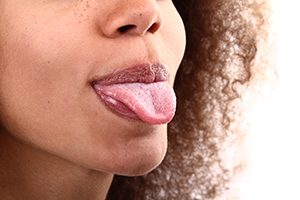 Train that Tongue
Train that Tongue
Without therapy, the wrong oral habits, sooner or later, will cause tooth movement, breathing and speech problems
You’d think swallowing is easy as falling off a log. But some of us need help retraining muscles that we’ve been using wrong all along.
A “bad” swallow is just the luck of the draw, usually caused by unbalanced facial muscles or enlarged tonsils. When you swallow normally (and we do it about 2,000 times a day), the tip of the tongue is against the roof of the mouth, just above the front teeth.
A tongue-thruster, on the other hand, has learned to swallow with the tip of the tongue against the front teeth. Over time, this habit forces the front teeth forward into an overbite—and probably orthodontic care later on.
Some people who swallow wrong suffer from persistent stomachaches after eating—because of air swallowed along with food. And if you wear a denture, you’ll have problems keeping it in place unless your tongue muscles cooperate.
Swallowing is not something we think about doing. So re-learning to swallow takes patience, grit, and the help of a therapist schooled in how facial muscles work.
Without therapy, the wrong oral habits, sooner or later, will cause tooth movement, or breathing and speech problems.
If your child breathes through the mouth, grinds teeth, or has trouble speaking, let’s size up the situation early. A series of muscle exercises—and practice, practice, practice—may help.

